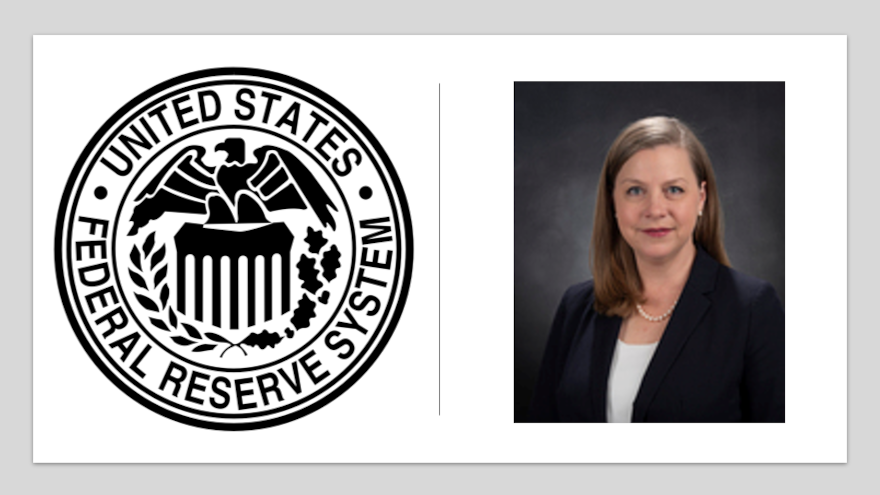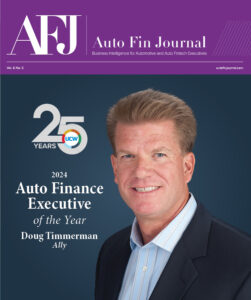Fed policymaker cautious about fintechs involved in ‘shadow banks’

Michelle Bowman is a member of the Board of Governors of the Federal Reserve. Images courtesy of the Fed.
A member of the Federal Reserve Board of Governors took a cautious approach on two fronts during a public appearance last week.
Michelle Bowman was guarded about the possibility of few banks in the marketplace. Bowman also was apprehensive about the growing number of what she called “shadow banks” operate with capabilities driven by fintechs.
Bowman explained her positions during the Wharton Financial Regulation Conference in Philadelphia.
“Many banks have focused more of their activities and services on technology and innovation, with a corresponding increase in risk, including cybersecurity and operational risk,” Bown said in her prepared remarks. “These trends will likely have significant consequences. Some of these are predictable, like limiting the availability of banking services to underserved communities. Others are indirect, like encouraging acquisitions through charter strip applications and pushing activities outside of the federal and state bank supervisory and regulatory perimeter.
“These trends may signal dysfunction in the de novo formation process that needs to be addressed by policymakers, and highlight the need for consideration of de novo formation as we review the U.S. regulatory and supervisory framework,” she continued.
Bowman noted that from 2002 to 2022, the number of FDIC-insured banks has declined by nearly half.
The Fed policymaker said that in her view, there are several features of the current U.S. banking system that suggest there is an “unmet demand” for de novo bank charters, including:
—Ongoing demand for “charter strip” acquisitions
—The shift of traditional banking activities out of the banking sector into non-bank financial entities, or the “shadow banking” sector
—The rising demand for banking-as-a-service partnerships
Bowman explained a “charter strip” acquisition occurs when a purchaser wants to open a bank with a new business model, but instead of applying for a de novo bank charter, the purchaser simply acquires an existing bank.
Bowman the highlighted the appeal of a “charter strip” acquisition.
“Simply put, it is often easier than chartering a new bank by side-stepping the de novo formation process. When evaluating a bank acquisition, regulators often rely on the legacy bank’s management performance and the existing supervisory and compliance record,” she said.
“The purchase of an existing charter can also bring efficiencies in terms of avoiding the restrictions that apply to de novo banks, which include higher capital requirements and business model limitations for the first several years of the new bank’s operation,” she continued.
Bowman then acknowledged nonbank financial entities play a “significant” role in providing credit and other financial services in the U.S. economy. She pointed out that the role of nonbanks has been driven, at least in part, by regulatory preferences that have encouraged a shift in lending activities from the regulated banking system to nonbanks.
“The growth of lending in the shadow banking system can have significant consequences for the availability of credit over economic cycles, with losses eventually being transferred to regulated depository institutions, as appears to have occurred after the 2008 financial crisis,” Bowman said.
“While the disfavored activities may be pushed out of the regulated banking system, losses may be transmitted back into the banking system through related activities like the extension of credit by banks to those same nonbank lenders. Regulation can exacerbate and accelerate the shift of activities from insured depository institutions to nonbank financial entities,” she continued.
Bowman then touched on when banks enter into a partnership with a fintech company, creating a banking-as-a-service entity. In these relationships, Bowman said the fintech provides customer-facing technology, while the bank provides some combination of ability to accept deposits, access to payments systems, extensions of credit, and issuance of debit and credit cards.
“These types of relationships can be valuable for community banks,” Bowman said. “They can help the bank provide new services or access new customers and can give the bank new business growth opportunities. This type of jump-start to innovation can make community banks more competitive with larger peers that may better be able to develop new technology and products in-house.”
However, Bowman also mentioned a potential pitfall.
“At the same time, could the rise of banking-as-a-service also be driven — at least in part — by the difficulty of de novo chartering? If a technology company has a new technology interface and product design that may better serve customer needs, it can be substantially faster to partner with an existing bank than to seek a standalone charter,” Bowman said.
“This can raise challenging operational issues about who should ‘own’ the customer relationship, but more importantly, about who is responsible for compliance obligations,” she went on to say.
Bowman rounded out her prepared remarks with a series of recommendations for the entire banking and fintech spaces.
“In my view, right-sizing regulatory requirements, improving transparency, and supporting regulatory approaches that support new banks are important tools to promote healthy competition and reduce unintended consequences,” Bowman said. “We need a viable pipeline for the creation of new banks in the United States, and there are troubling indications that we are falling short on this front, with a continued decline in the number of banks in the United States, the continued interest in charter strip applications, and the ongoing shift of traditional bank activities into shadow banks.
“While de novo bank formation may not be a top-of-mind issue for policymakers as we continue to deal with the recent bank failures, it remains an important issue,” she continued. “As policymakers consider the regulatory and supervisory framework in the U.S. banking system and consider specific adjustments to address identified shortcomings, we should also take into account the impact of incremental additional regulatory changes not only on de novo bank formation, but also on credit availability, competition and the financial system.”

 View The Latest Edition
View The Latest Edition

